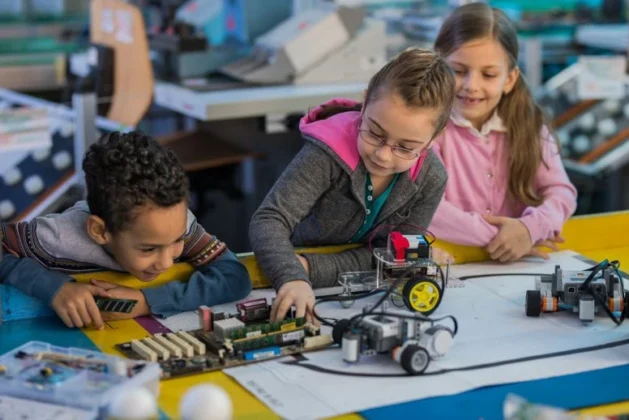As we navigate an increasingly tech-driven world, the need to equip students with future-ready skills is no longer optional—it’s essential. Robotics in middle school classrooms is more than a trend; it’s a powerful educational tool that enhances engagement, fosters problem-solving skills, and prepares young learners for careers that don’t even exist yet. This article explores why introducing it at this stage is crucial, how it benefits students across disciplines, and practical ways schools can implement robotics programs.
Table of Contents
Introduction
Middle school is a formative period in a student’s academic journey. It’s a time when curiosity is high, self-identity begins to develop, and cognitive skills expand rapidly. Introducing robotics at this stage can act as a catalyst—not just for STEM learning, but for overall intellectual and social growth. Robotics merges science, technology, engineering, and math with creativity and collaboration, making it an ideal educational tool for the 21st century.
The Case for Robotics in Middle School
It is often associated with high-tech labs or university-level research, but its benefits start much earlier. In middle school, students are old enough to grasp complex concepts but young enough to be deeply curious and imaginative. This makes them ideal candidates for exploring robotics, which combines mechanical engineering, computer science, and hands-on building skills.
Here’s why it matters:
1. Enhances Critical Thinking and Problem-Solving
It teaches students how to break down complex problems, test solutions, and iterate quickly. Whether it’s troubleshooting code or redesigning a robot’s structure to perform better, these tasks sharpen analytical thinking.
2. Improves Engagement Across Subjects
Unlike traditional subjects that may feel abstract or disconnected from real life, it offers immediate feedback. Students see their ideas take shape in real-time, which boosts motivation and helps them understand concepts in physics, math, and computer science more deeply.
3. Fosters Creativity and Innovation
It is not just about following instructions—it’s about creating something new. Students get to design, build, and code their own robots, encouraging creative exploration and experimentation.
4. Builds Collaboration and Communication Skills
Robotics projects are often team-based. Students must work together, share responsibilities, and articulate their ideas. These experiences help develop soft skills that are just as critical as technical ones.
5. Prepares Students for Future Careers
Many of today’s fastest-growing careers involve automation, AI, and robotics. Introducing students to these concepts early demystifies the technology and helps them envision themselves in high-tech roles down the line.
Practical Ways to Introduce Robotics in Middle School
- Start with Kits: Begin with beginner-friendly platforms like LEGO Mindstorms, VEX IQ, or Arduino-based kits that come with structured lesson plans and online support.
- Incorporate Robotics in Curriculum: Embed robotics in science or computer classes to reinforce existing topics with hands-on projects.
- Host Competitions: Engage students by participating in national or global robotics competitions like FIRST LEGO League or RoboCup Junior.
- Teacher Training: Ensure educators are comfortable with the technology by offering professional development workshops or collaborating with local tech companies or universities.
- Equity and Inclusion: Make robotics accessible to all students, regardless of gender, economic background, or prior tech exposure. Encourage diverse participation to foster a more inclusive STEM culture.
Challenges and How to Overcome Them
Schools may face hurdles such as limited budgets, lack of trained staff, or inadequate infrastructure. However, many solutions exist:
- Apply for STEM grants or public-private partnerships.
- Use low-cost or open-source robotics platforms.
- Start small—with one class or club—and scale as interest and support grow.
Conclusion
Bringing it into middle school classrooms is no longer a futuristic idea—it’s a present-day necessity. As technology continues to reshape our world, equipping students with the tools to understand, create, and innovate is the best investment we can make in their future. Robotics education does more than build machines; it builds confidence, competence, and a mindset ready to tackle tomorrow’s challenges.
Read More: Microlearning: The Future of Fast, Focused Education




